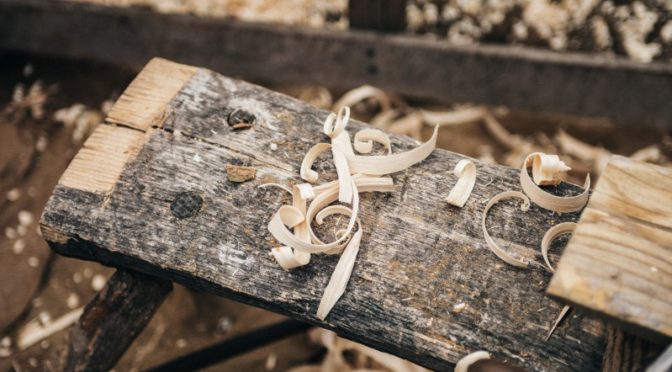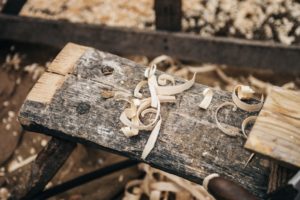
If you’re interested in buy-it-for-life wood flooring, you’re going to need to make hardness and scratch resistance a priority. In the hardwood flooring industry, the Janka hardness test is the standard approach to measuring how resistant a wood sample is to both denting and wear. It has to do with the amount of force needed to embed a small steel ball halfway into a wood sample. If you want to know if your wooden floor is likely to last for decades or will probably wear down in a few years after foot traffic and dog claws, you’re going to want to check the Janka rating. Today we’ll review what features to look for in wooden floors for durability as well as the Janka hardness values for various hard and soft woods.
What’s most important when choosing a wooden floor for hardness?
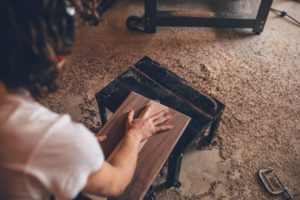
When looking for a hard wooden floor, you’re going to want to prioritize three things: solid wood, hardwood, and exotic wood. Solid hardwood is essential; this is not the time for engineered wood. The problem with engineered wood is that it’s really just a thin layer of the wood you want above a much thicker plywood base. No matter which hardwood you choose for the veneer, it’s thin enough that it’ll scratch and dent easily, and unlike with solid hardwood flooring, you won’t be able to resand it once it’s marred.
Similarly, you want to prioritize actual hardwoods instead of soft woods. Examples of hardwoods are tree species like pecan, oak, maple, hickory, and ash. Pine, fir, hemlock, poplar, and chestnut are soft woods; soft wood flooring isn’t a long-term solution for floors unless they’re installed in work or hobby areas.
Third, you’ll need to limit your search to exotic woods instead of domestic ones. Exotic woods are those that come from other continents, including South America and Australia. Domestic woods are those sourced from the United States, Canada, and Mexico. While most shoppers think exotic woods are prohibitively expensive, they’re often affordable if you choose the right woods.
Which trees and hardwoods have the highest Janka scores?

While there will be some natural variation from one sample of hardwood to the next within a given species due to the conditions in which the tree grew and how the wood was prepared after harvesting it, there are general guidelines that are rather consistent across species. Below is a selected list of Janka scores for 10 species of domestic and exotic woods. It’s crucial to remember that when measuring wood flooring hardness via the Janka test, what’s truly measured is how well the wood resists impact; it doesn’t necessarily tell you if the wood will scratch or scuff if you drag a high heel or table over it. However, it does give you an idea of how strong one floor is likely to be relative to another. Higher scores are better, as they mean the wood required more force to be dented. Lower scores indicate wood required less force before damage occurred.
Species of hard / soft wood
|
Janka rating, soft to hard (lbf)
|
| Balsa | 70 |
| Douglas Fir | 660 |
| Red Maple | 950 |
| Red Oak | 1,290 |
| Hard / Sugar Maple | 1,450 |
| Hickory, Pecan | 1,820 |
| Brazilian Koa | 2,160 |
| Brazilian Walnut, Ipe | 3,684 |
| Brazilian Tiger Mahogany | 3,840 |
| Australian Buloke | 5,060 |
What are the pros of choosing a soft wood over hardwood?

While we exclusively recommend hardwoods over soft woods for home flooring if durability is a priority, there are some situations in which you can reasonably consider soft wood. First, you can make soft woods somewhat harder and scratch resistant by adding polyurethane finishes to them. Second, you’re going to pay more money for hardwoods than you will for medium and soft woods, and if you’re on a budget but still insist on wood, softwoods might be worth considering. Third, you’re going to spend more money installing hardwood than you will with softer woods (or many other floors) due to the toughness of the wood; keep this in mind if you’re on a smaller budget. Finally, you can use soft woods in a range of applications where durability and wear resistance aren’t priorities, including in outbuildings, in work shops and tool sheds, and on decks, where people spend comparatively less time than indoors.
Do you need special vacuums to clean and maintain very hard (or soft) wooden floors?
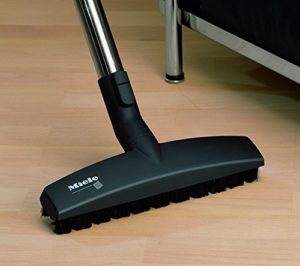
Regardless of which wood you choose to floor your home, the good news is that you aren’t going to need a special vacuum to clean it. As long as you’re dealing with wood (and keep it dry), you can use generally old-fashioned techniques like sweeping or vacuuming with a normal vacuum to keep it in good shape. That said, if you’d like to make your cleaning more efficient and add a polish to your floors, we typically recommend using a vacuum with a Parquet head.
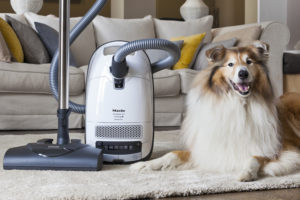
Parquet heads are faster to clean with than normal vacuum heads because the brushes help you clean up dust and dirt instead of simply pushing it around due to the air currents around the vacuum. We also recommend choosing vacuums with electric brush heads–not for bare floors, but because most families will have carpets or at least area rugs in some part of their homes, and a powered brush head will be far more effective than any air-powered head when it comes to pulling pet hair, dirt, grime, and whatever else is embedded in your carpets from the fibers. Two vacuums that include both heads are the Miele Complete C3 Cat & Dog (reviewed here and here) and Miele Compact C2 Electro+ (reviewed here and here). Both are buy-it-for-life vacuums that will give you years of reliability while helping you care for all the floors in your home.
![]() You can buy the Miele Complete C3 Cat & Dog here on Amazon or buy the Miele Compact C2 Electro+ here.
You can buy the Miele Complete C3 Cat & Dog here on Amazon or buy the Miele Compact C2 Electro+ here.
![]() Canadians can buy the Miele C3 Cat & Dog here or buy the Compact Electro+ here.
Canadians can buy the Miele C3 Cat & Dog here or buy the Compact Electro+ here.
 If you find our research on PMC helpful, you can follow our efforts to keep maniacally reviewing home cleaning tools by shopping through our links above. We promise to keep fighting the good fight against every horror children, animals, and grown, yet messy humans can inflict upon a clean home.
If you find our research on PMC helpful, you can follow our efforts to keep maniacally reviewing home cleaning tools by shopping through our links above. We promise to keep fighting the good fight against every horror children, animals, and grown, yet messy humans can inflict upon a clean home.

